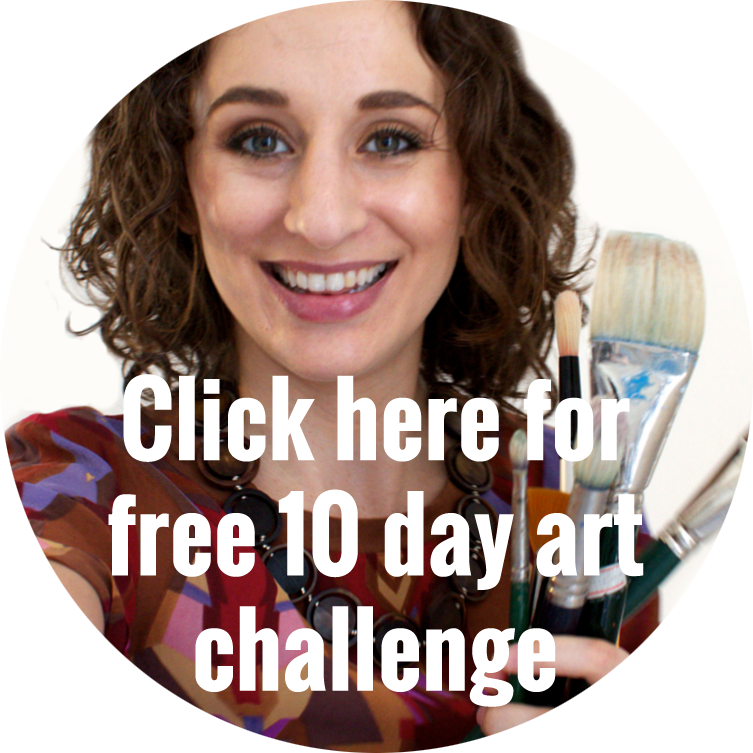
Header of the Patreon Homepage
Today we look at artists building their community (and income) using Patreon.
I’m a fan. I’ve interviewed her as a Creative Spirit. I also admire her unique belief that copyright only hurts artists. She actively says people have the right to use her art. And as some would say, despite this, she makes a living from her art! When I found out she had a Patreon community I had to take a look.
Gwenn’s header clearly shows the style of her artwork as does her profile. She often depicts animals and portraits so it’s smart that she shows both right as you open her profile page.

Gwenn Seemels’ Header for her Patreon home page
Gwenn’s video showcases her extensive portfolio, and even without words we can see her effort, consistency and commitment to her art. This builds credibility and authority. Also, the images cycle quickly to keep our interest. She clearly describes each reward level.
Speaking of rewards, Gwenn builds in price points that value her efforts. People have to commit to at least two months at certain reward levels to earn an artwork. This reflects some of what I mention about sustainability here.
She also offers a goal with an incentive that helps her community: they can earn an artwork through a raffle. She was one of a few artists I observed offering raffle tickets across Patreon. I love the idea and am also using it.
I’ve only really spoke of monthly rewards since that’s what I use but this creator actually does a payout per content release. What this means is each time he makes a new video he earns a certain amount of money.

The Terrain Tutor’s Patreon Header
The Terrain Tutor’s head communicates clearly who his audience is and who will enjoy his content. This is important: you can’t please everyone and trying to make your work and YOU “likeable” to everyone is a mistake. Be who you are. That’s why people will choose to invest in you and your art. Speaking to this, I enjoy how his profile picture demonstrates personality.
The Terrain Tutor’s video explains Patreon for people new to the platform as well as how it helps him do his work. He is genuine when describing his passion and interest, which will connect with other people making terrain. The Terrain Tutor explains he wants to create to help his community. It’s not a fancy video, but it allows us to get a sense of his personality and his work. Don’t set your expectations for your video so high you never make one. Keep it basic. Don’t fret about your video skills. Just be you.
Lauren Fairweather is another artist doing a per video payout.
Lauren has a great headshot and a banner that speaks to the kind of work she does. Her images and text clearly speak to her personality and create a united brand for her work. This brand feeling helps build authority.

Share this resource and Pin it
Knitty shows you just how much of a difference can be made by small groups of people. Magazines today have a much harder time succeeding and this craft magazine is super smart: they decided to work with new systems like Patreon to keep their production going. They are able to pay the salaries of team members because of their community. Note: you can think big. AND: It may take time to get there, but it’s possible.
Knitty’s header showcases different issues of this magazine while the profile image is a logo. They go into great detail describing below these images what Knitty is, and how Patreon will help them continue to create the magazine (as well as offer a myriad of other benefits to patrons).

Knitty’s header
Knitty’s video showcases designs that were included in the magazine, and clearly speaks about the creator’s passion and how the magazine has impacted the knitting industry. It speaks to the longevity of the project and clearly showcases why knitters would value their work.
It was also smart to include testimonials within their text too – it proves that other patrons are happy (as if seeing over 3000 patrons wouldn’t be enough?!).
There are A LOT of Patreon Creators out there. Find some that speak to you and watch their videos. Read their rewards. How do they convey their “unique selling proposition?” How do they show personality? How can YOU? Other notable creators I encourage you to check out include: Karen Whitworth, Clare Galloway (my friend who inspired my decision to use Patreon), and Shing Yin Khor.
Don’t come to Patreon thinking, “if I build it they will come.” That isn’t how it works. If you do a basic search on Patreon of “artist” you will see pages of creators that come up and are earning 0 dollars a month/per project. Using Patreon is a commitment. It’s a decision to create a space to better connect with people in your already existing community and reward them for their commitment and interest in your work. Use today’s examples to inspire you to commit to this platform, or acknowledge you aren’t ready yet. Then determine what you need to do moving forward to succeed on a platform like Patreon.
Be Creatively Courageous: Find 3 people “making” similar to you on Patreon. Find 5 things they are doing well you could consider for your campaign.


Recent Comments